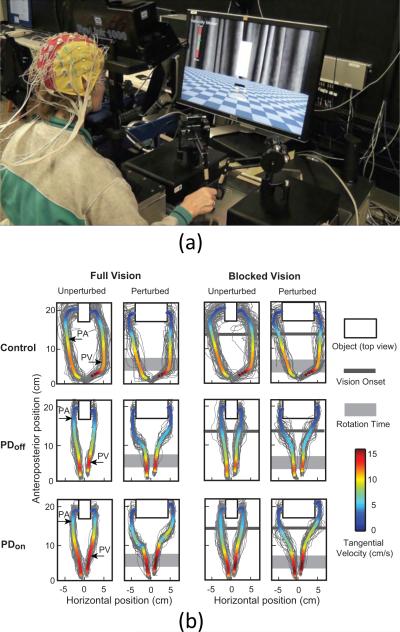Figure 4.
Eye-hand coordination and corrective response control in PD during a reach-to-grasp task. (a) Experimental setup using eye-tracking hardware, haptic robots, EEG and a virtual reality environment. Participants reached to and grasped a rectangular object displayed on the screen with the thumb and index finger of their right hand fixed into thimble gimbals affixed to the left and right robot, respectively. Participants had haptic as well as visual feedback of the dock so that they felt their hands resting on a solid surface. The object's orientation was perturbed on 33% of the trials by rotating it 90 degrees in the frontal plane, thereby making the object appear horizontal. The perturbation occurred at a randomly jittered distance of 20-40% between the starting dock and the front of the object. The goal of the task remained the same regardless of the object orientation: to grasp along the left and right sides of the object. Therefore, participants had to adjust their grasp dynamically to a larger precision grip during perturbation trials. (b) Top view of reach to grasping movements in one representative PD patient on and off medications (PD ON vs. PD OFF) and his/her age-matched control. For the blocked vision conditions, visual feedback of finger position was removed during the first ~2/3rds of the reach, as depicted by a dark gray line. The average peak aperture (PA) and peak tangential velocity (PV) are marked along the thumb and index finger for each of the representative subjects during the unperturbed full vision condition. EEG data not shown. Adapted from [105].

